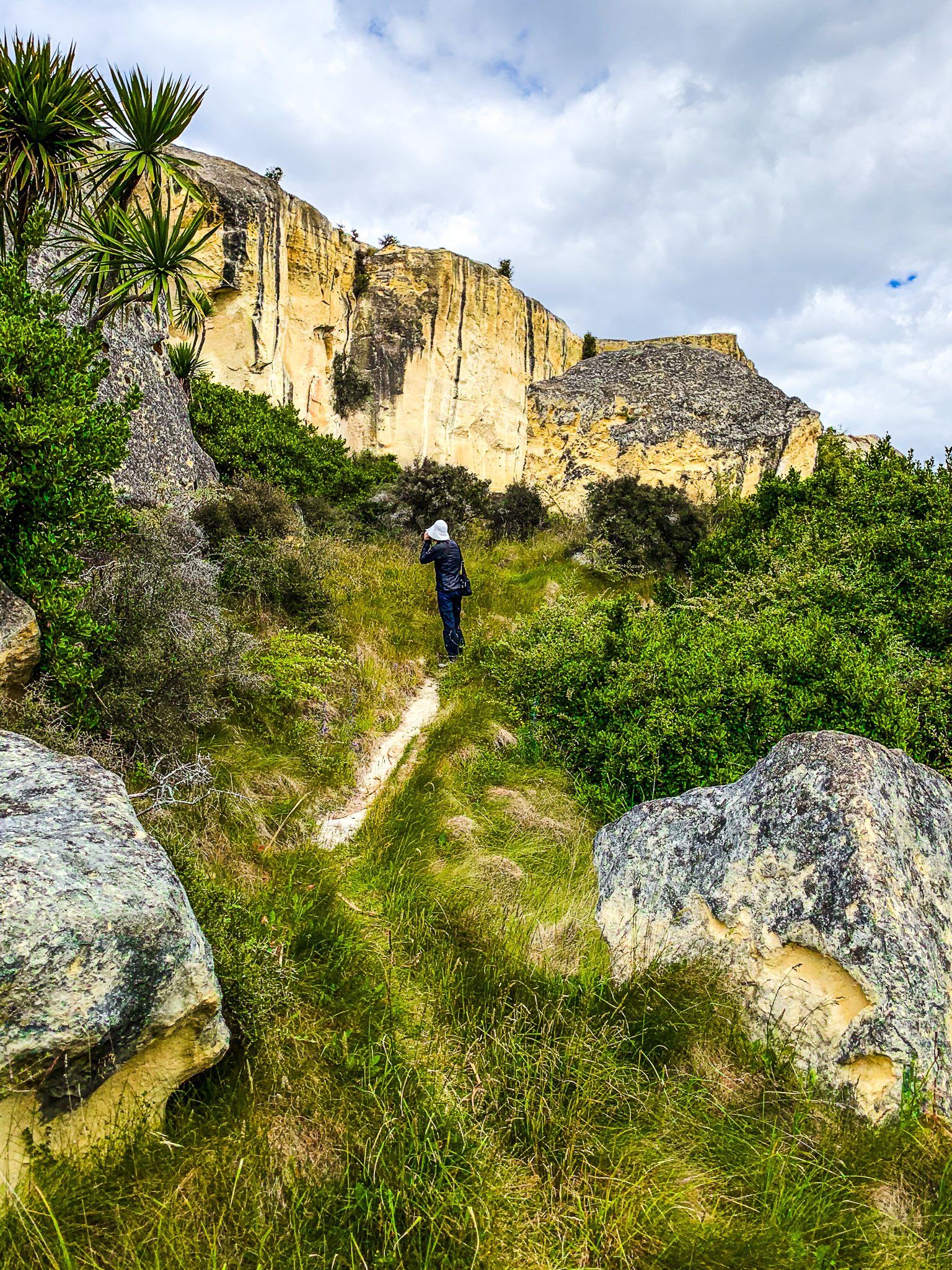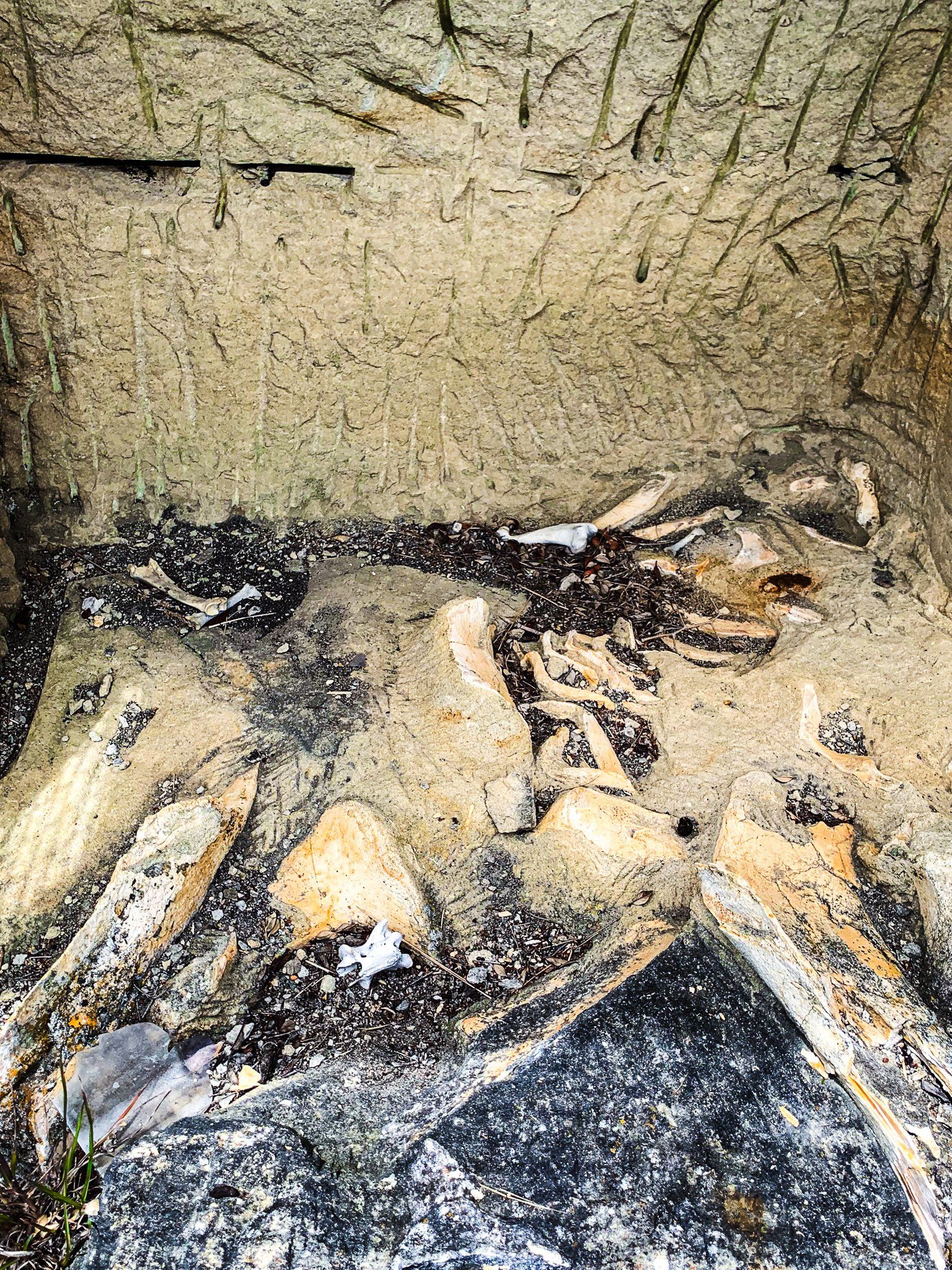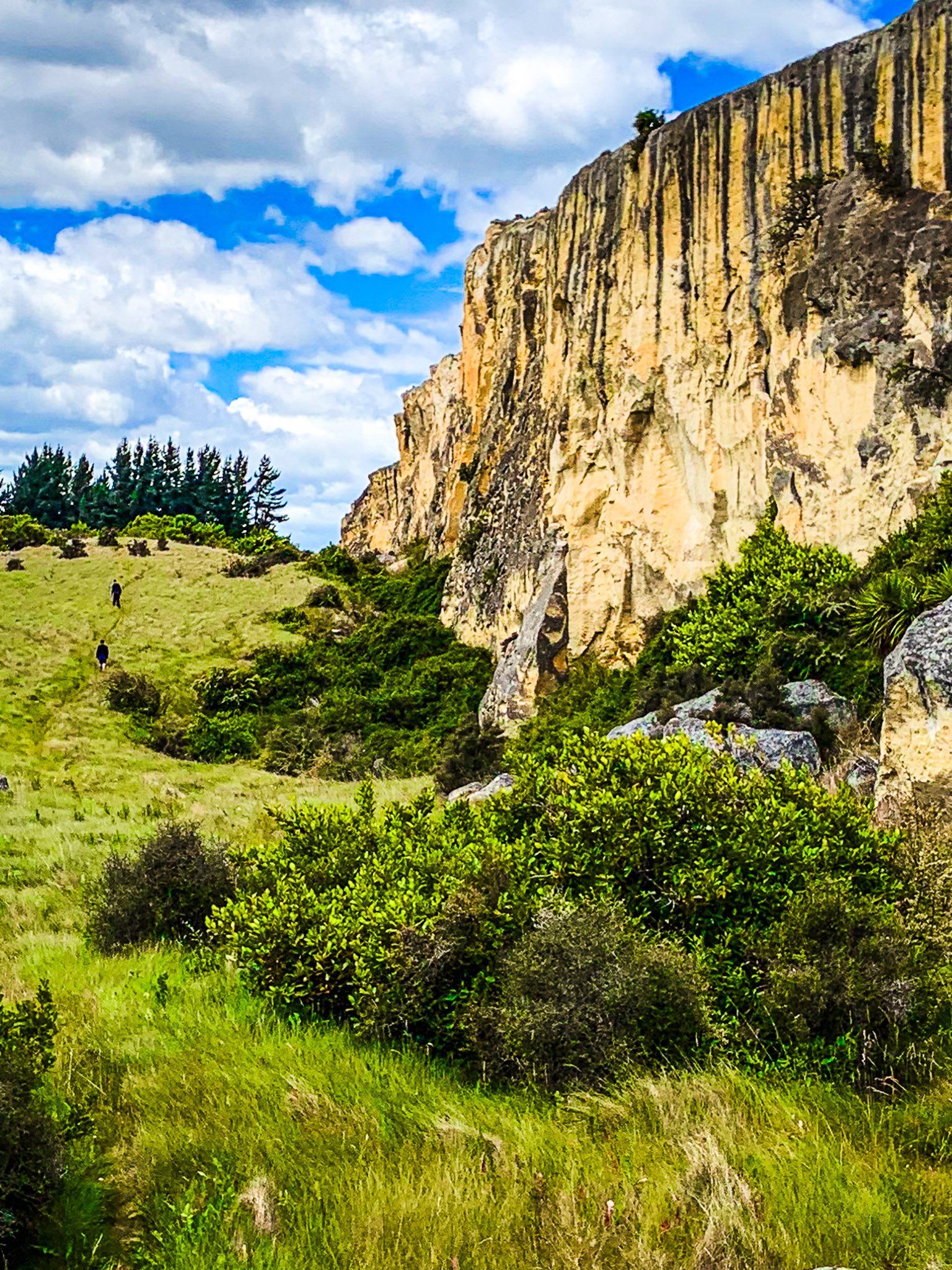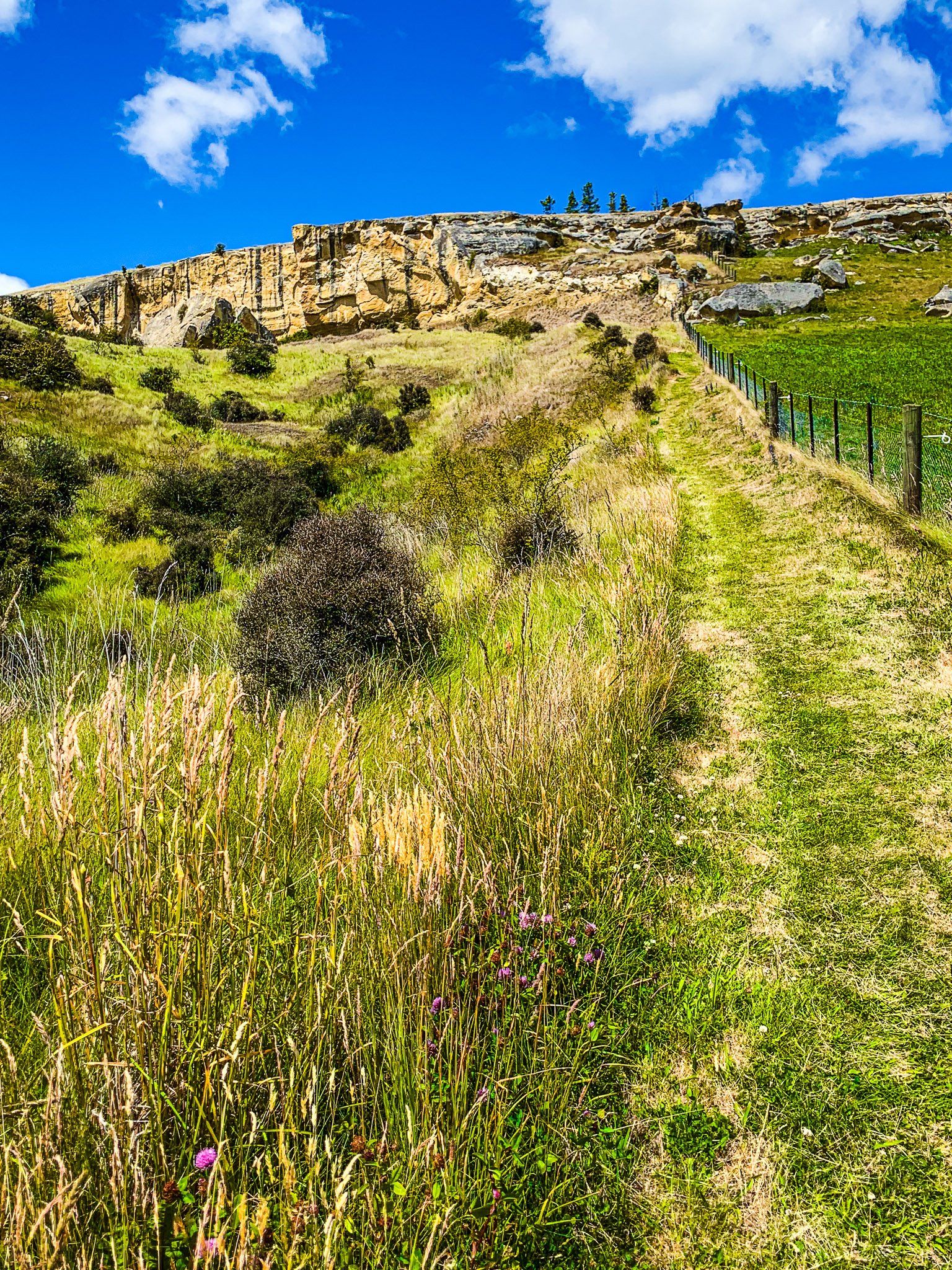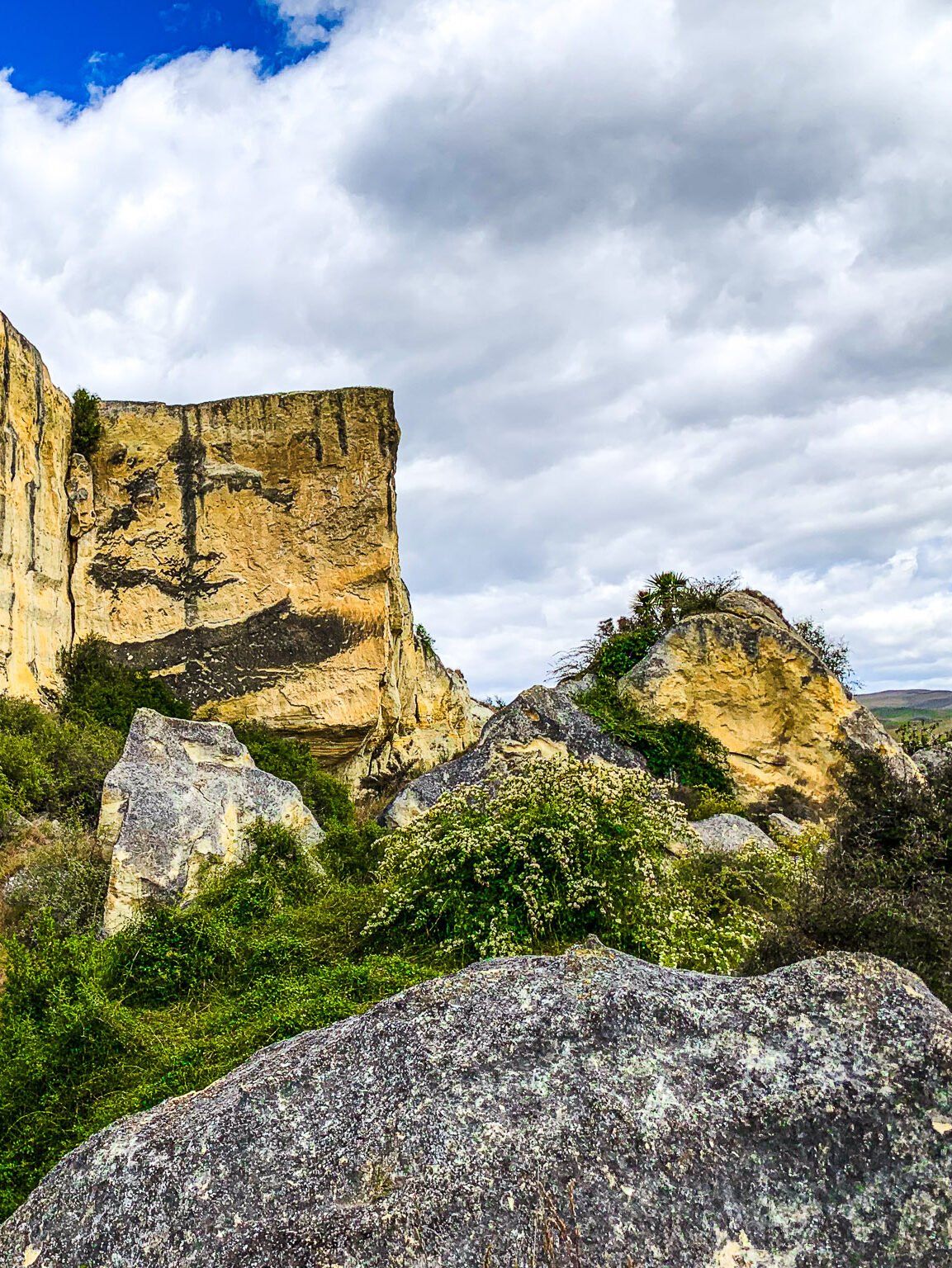Earthquakes Waipata is probably one of NZ’s most oddly named places. It reflects the early European belief that the very large boulders below the creamy to yellow limestone cliff along Earthquake Road were due to an earthquake. This is not the case, rather, the boulders broke off the cliff as it was exposed by a massive slide and the subsidence of the front part of the rock formation long ago.
The cliff and boulders are worth the visit, but there is also a carefully protected ancient baleen whale fossil, consisting of its lower jaw. The jaw fragments are toothless and oval in cross-section – similar to the jaw in a modern baleen whale. Exposed fossils in the Waitaki Valley normally consist of just a few bones; this is a larger example. Rare native plants unique to the whitestone ecosystem are also a feature of this site.
Turn off State Highway 83 at the northwest end of Duntroon onto Earthquake Road. The site, with a short walk to the base of the cliff, is about three km along the road. Take care if you walk beyond the baleen whale fossil, as there are crevices and a risk of falling rocks.
Waipata Earthquakes is between Takiroa and Maerewhenua Māori rock art sites, creating a perfect short route for geology fans.

